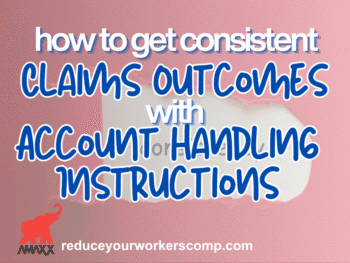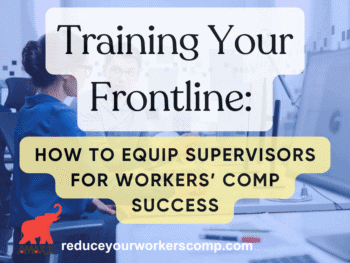It Isn’t “US” Against “THEM”
Look around. Are there horror stories of how employers, insurance companies and government agencies stick spokes into what should be a smooth-running workers’ compensation process? Oh yes!
Recently the city of Atlanta spent more than $171,000 over a five-year period fighting the claim of five gravely injured city workers – we are talking about one being brain damaged and the other four in wheelchairs. So, what’s the point? The workers have serious, life-altering injuries. Are they likely to return to their jobs? No. It would be better to settle the claims and move them onto permanent disability status thus giving them and their families peace of mind.
Every employer needs to ask: “What is the bottom-line GOAL in resolving injured employees workers’ compensation claims? Reducing the COST & LENGTH of claims and returning the employee to work. While it may be all about the money, it’s also very much about the employee.
Create a Positive, Effective Response When Employees Are Injured
Proactive Communication: Inform employees of the policies, programs and procedures expected of them in the event of a work-related injury.
Be interested in the injured worker’s concerns such as: Who will pay my medical bills? How long will I be out? Will I lose my job? How will I support my family; Do I have a workers’ comp claim? If I can’t do my regular job, is there another one for me?
Have a Plan
1. Know what to do when the injury occurs.
2. Make sure the worker receives prompt, adequate medical care.
3. Send a company representative with them to the medical facility.
4. Complete all relevant paperwork.
5. Arrange for personal items and car to be taken home.
6. Answer questions, be reassuring and convey interest in their well being.
Reactive Communication: Following the injury establish and maintain communications with the injured employee so s/he remains psychologically connected during recuperation and focuses on the final objective of returning to work as soon a medically able as a healthy, productive employee.
1. Remain in weekly telephone contact.
2. Send a get-well card.
3. Set-up weekly meetings at the workplace.
4. Make sure the injured worker keeps all medical appointments, even if you arrange transportation.
5. Arrange for a transitional duty assignment when the worker is medically able.
Employers with a plan can answer questions when they arise (and they will) and allow the parties to resolve them without resorting to lawsuits or other harsh methods. ( workersxzcompxzkit).
Engaging injured workers in an adversarial battle of wit and wills is a death knell to reducing costs and does nothing for the workplace environment, the employee’s attitude or the employer’s reputation. And, sends people running for their lawyers.
Author: Robert Elliott, J.D.
Click on these links to try it for yourself.
WC Calculator: www.ReduceYourWorkersComp.com/calculator.php
TD Calculator: www.ReduceYourWorkersComp.com/transitional-duty-cost-calculator.php
WC 101: www.ReduceYourWorkersComp.com/workers_comp.php
Do not use this information without independent verification. All state laws are different. Consult with your corporate legal counsel before implementing any cost containment programs.
©2008 Amaxx Risk Solutions, Inc. All rights reserved under International Copyright Law. If you would like permission to reprint this material, contact Info@WorkersCompKit.com

















